Python Virtualenvwrapper Tool 👍
I’d like to introduce you to a cool tool that you can use to manage Python project virtual environments, called virtualenvwrapper.
These are the slides from a Lightning talk I gave at the San Diego Python Meetup in March 2016.
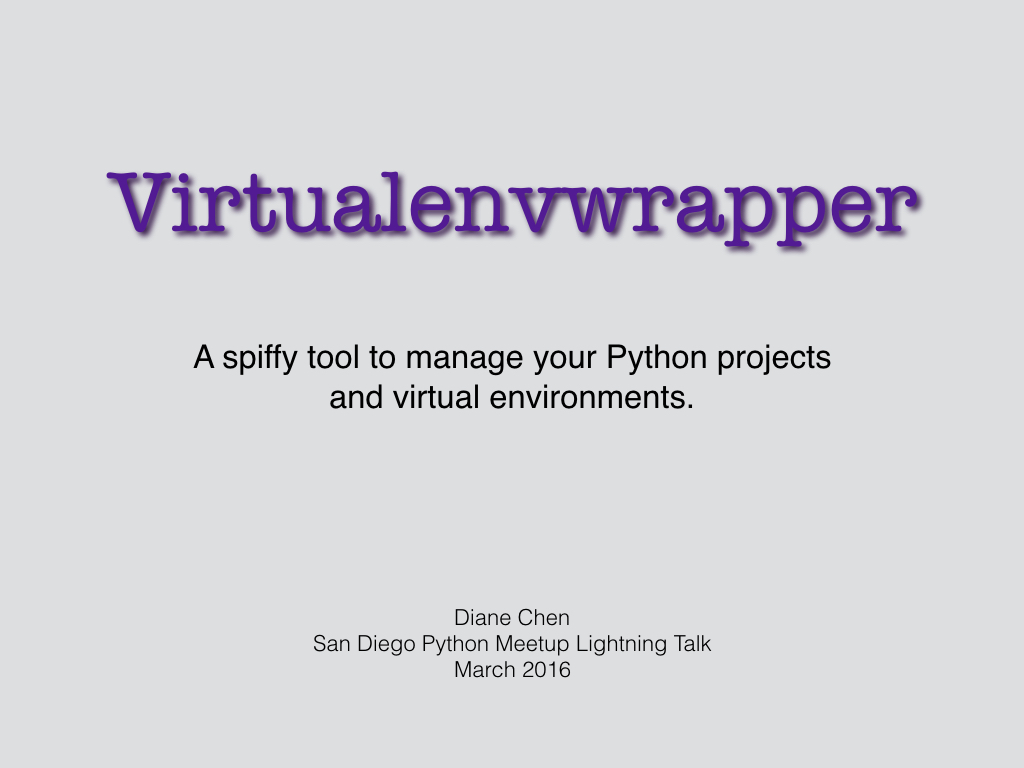
You are probably already aware of virtual environments, or “virtualenvs” that allow you to use different versions of Python and Python packages. Last fall, when I was working with Trey Hunner with materials for the Python class he was teaching, I discovered the existence of virtualenvwrapper and was excited to find out how useful it can be.
I try to be organized, and keep my projects and virtualenvs where I can find them. But I was finding it difficult to remember what I named projects and venvs. Especially when following various tutorials that do things a little differently.
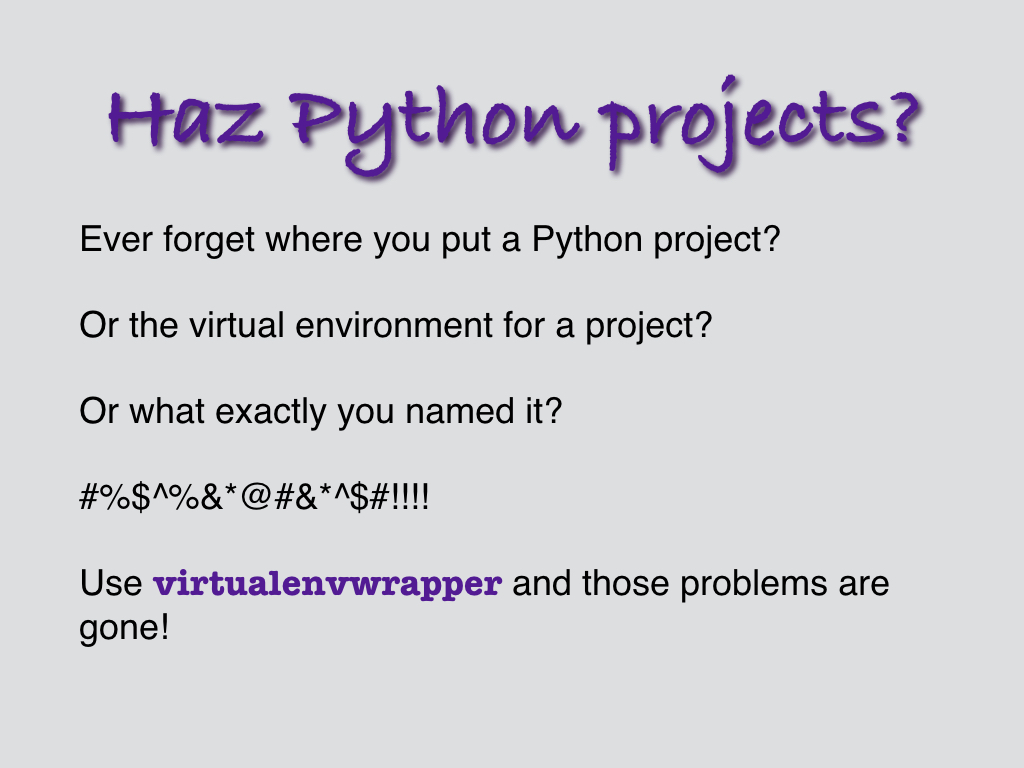
Now with virtualenvwrapper, I can always find my projects and virtualenvs.
Step 1. Install It Globally
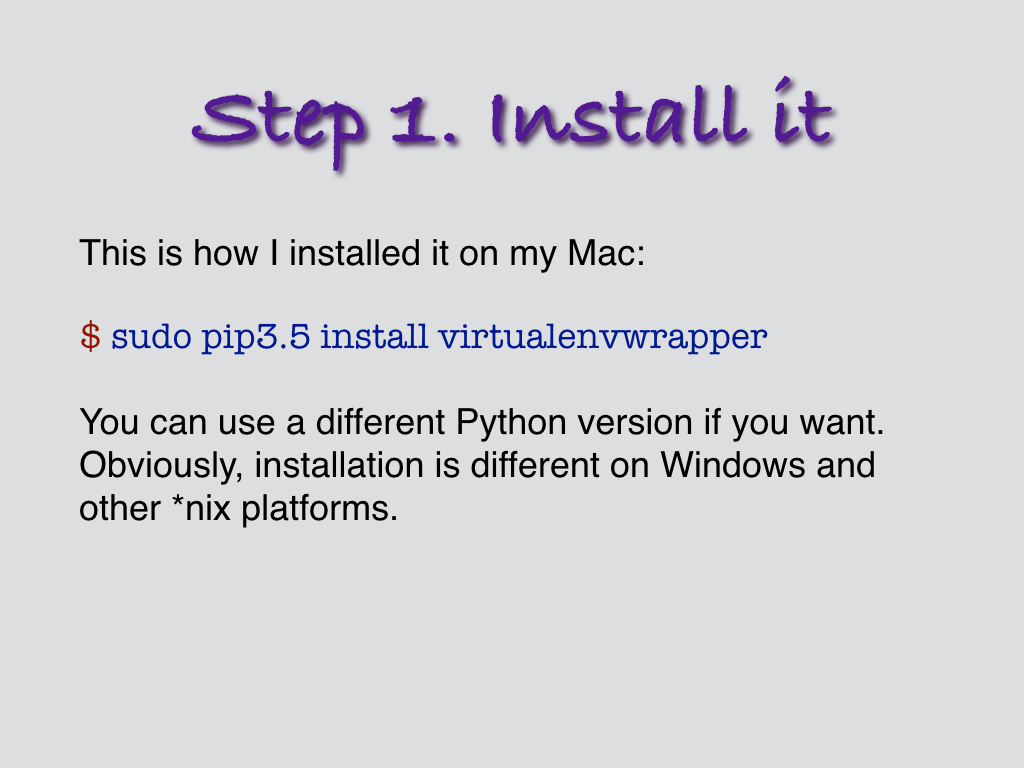
My default Python is 2.7, but I want to have my default Python projects be 3.5, so I used
pip3.5 instead of just pip.
Step 2. Simple Set-up
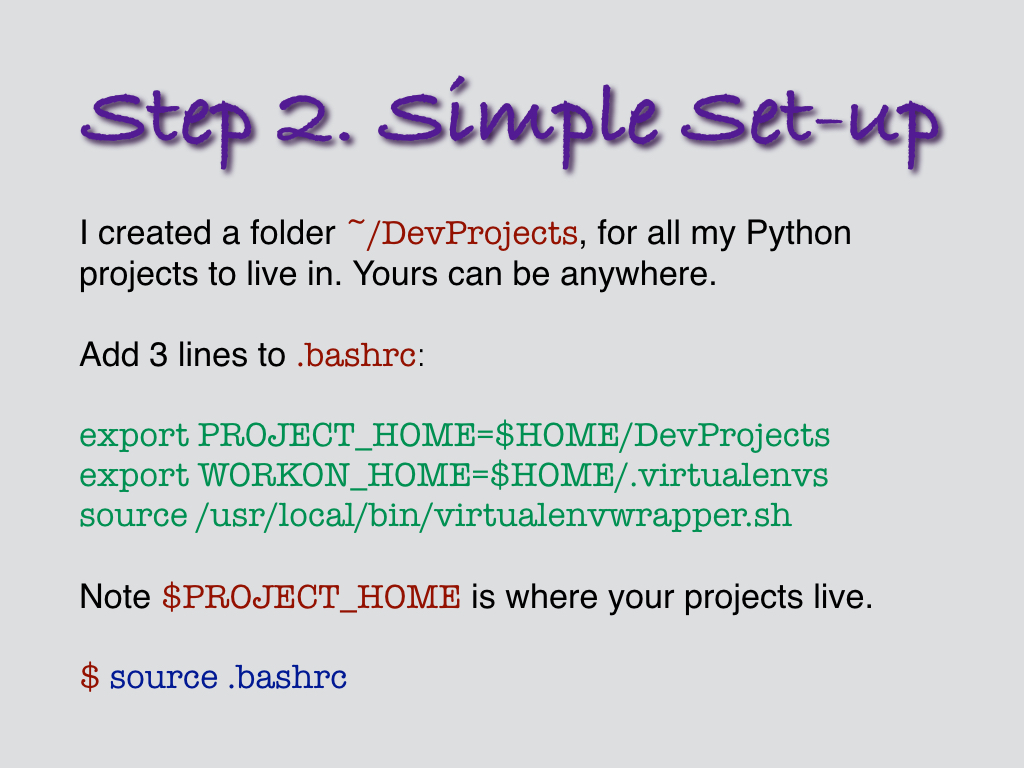
Once all this is set up, you don’t need to worry about it anymore. Note: My .bashrc file is sourced by .bash_profile
Step 3. Create a Project
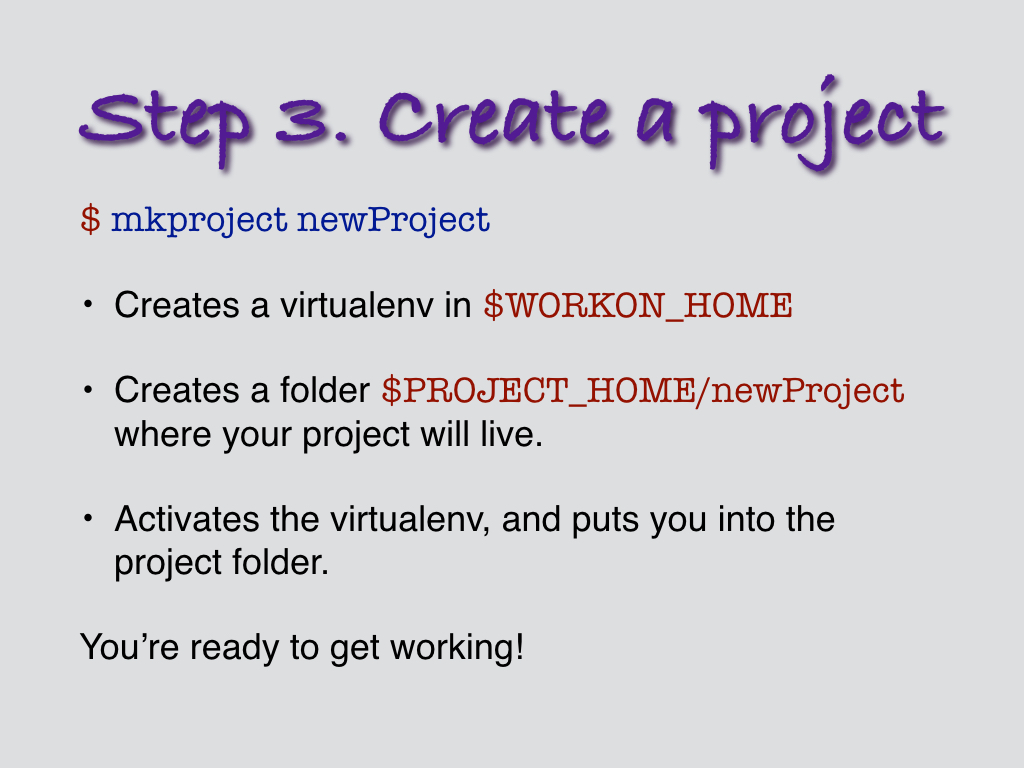
Just like with any virtualenvs, your command line will be prefixed by the name of the virtualenv.
Later on…
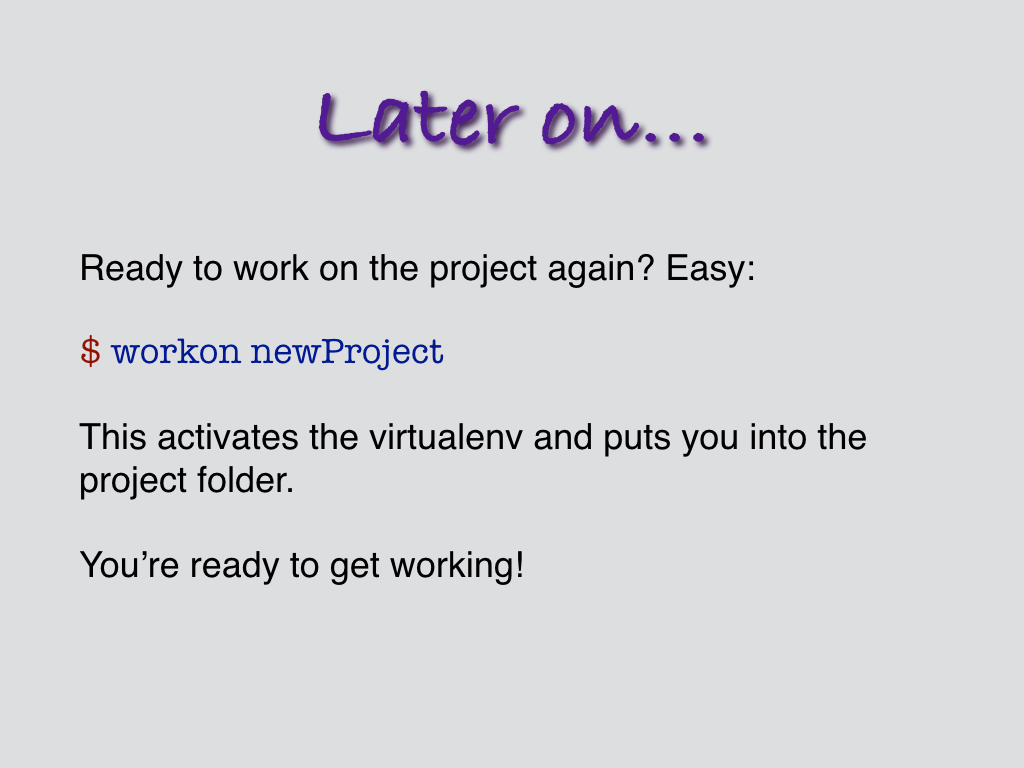
The best part comes later, when you’ve been away from the project, the terminal window’s been closed, and you’ve forgotten the details of the project. Say you called the project newapp when you created it with the virtualenvwrapper tool. All you have to do to get back to it is type workon newapp. Voilá! Your virtual environment is activated and you are dropped into the newapp project directory, ready to get to work!
Find Your Projects

This is one of the best parts! I don’t always remember what I called a project - I try to make the names mean something but I also like them to be short & sweet. So sometimes it’s a mystery to me what I might have called a project. With virtualenvwrapper, mystery solved!
Create Just a virtualenv
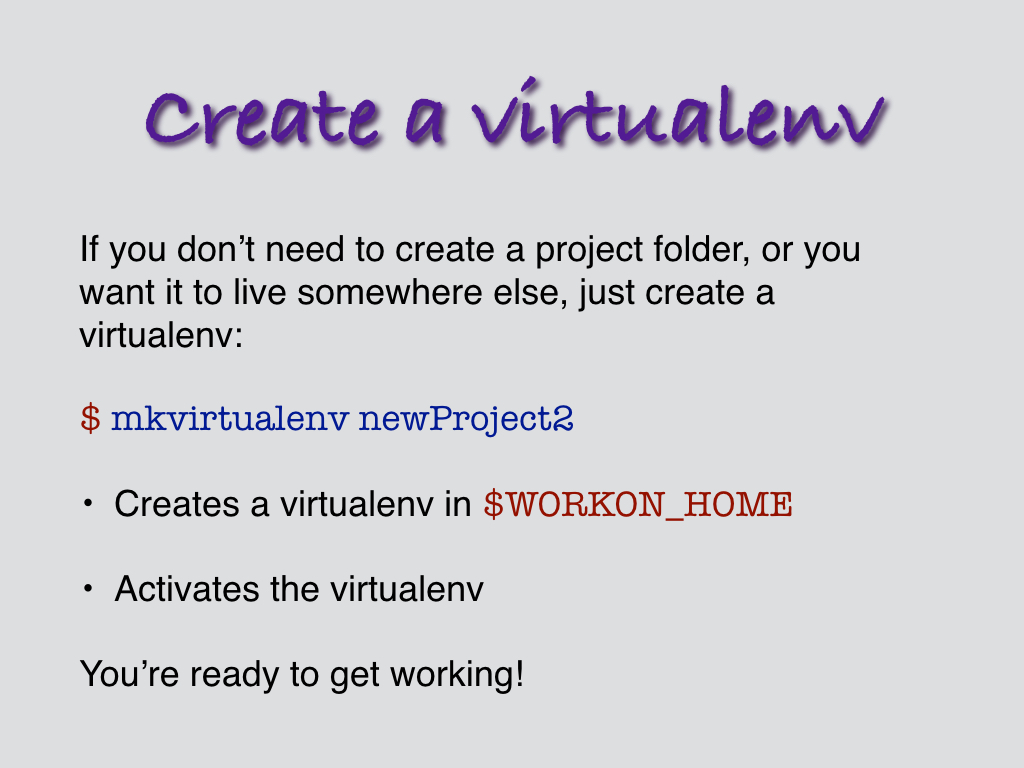
Sometimes you want a different file structure, or want the project to live somewhere other than the default folder. You can still create a virtualenv and use workon myvenv to activate it.
Other Useful Commands
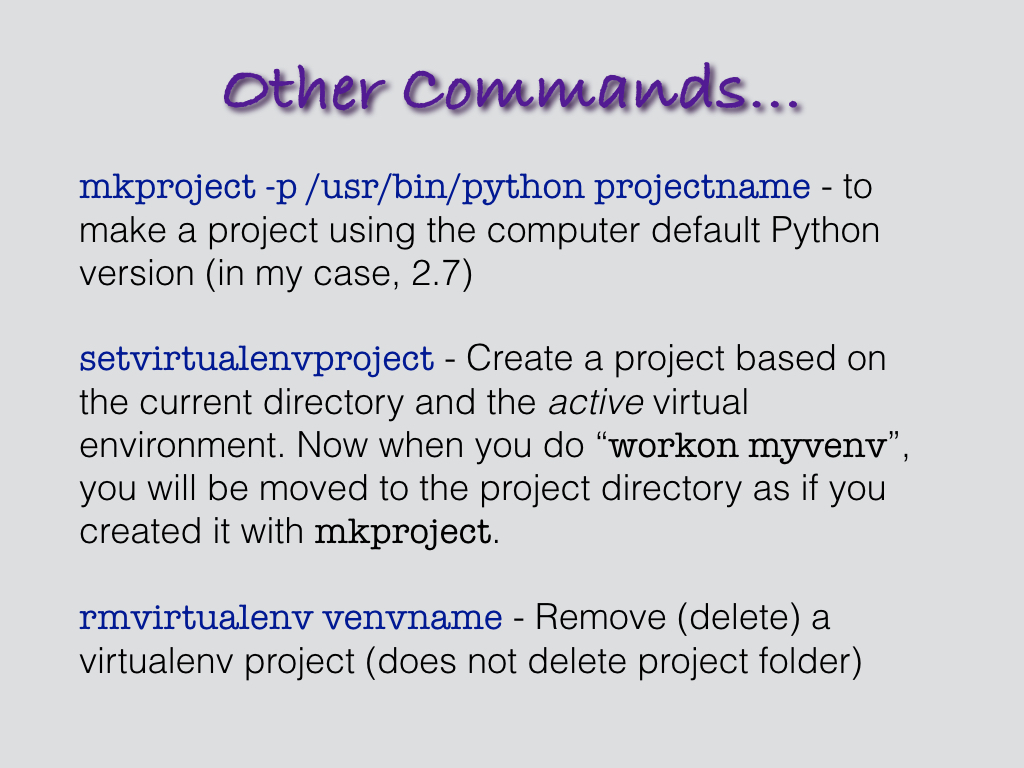
If you have several projects that are related (so you want to use a different project file structure from virtualenvwrapper’s default), and they have different virtualenvs, you can create the virtualenvs with mkvirtualenv. Then, when you have the project file structure the way you like it, you can use setvirtualenvproject from each of the project folders to associate them to the virtualenv. Then when you use workon to activate a virtualenv, it will put you into the correct project folder.
Further Readings
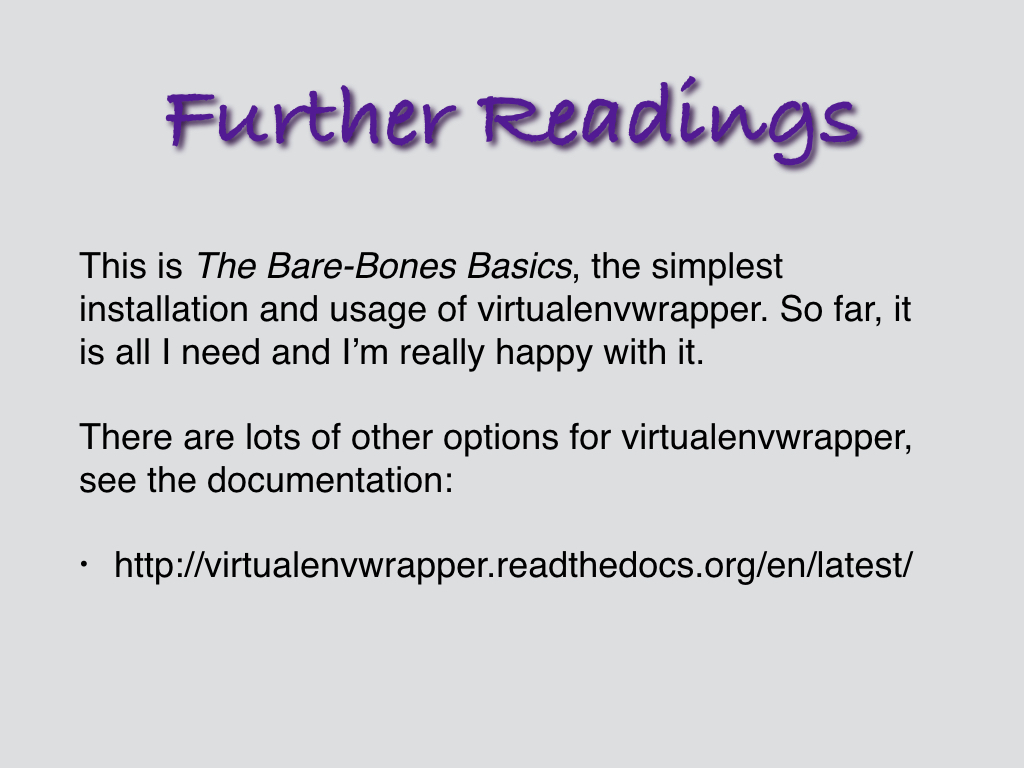
Here is a clickable link to the docs: virtualenvwrapper
Caveats
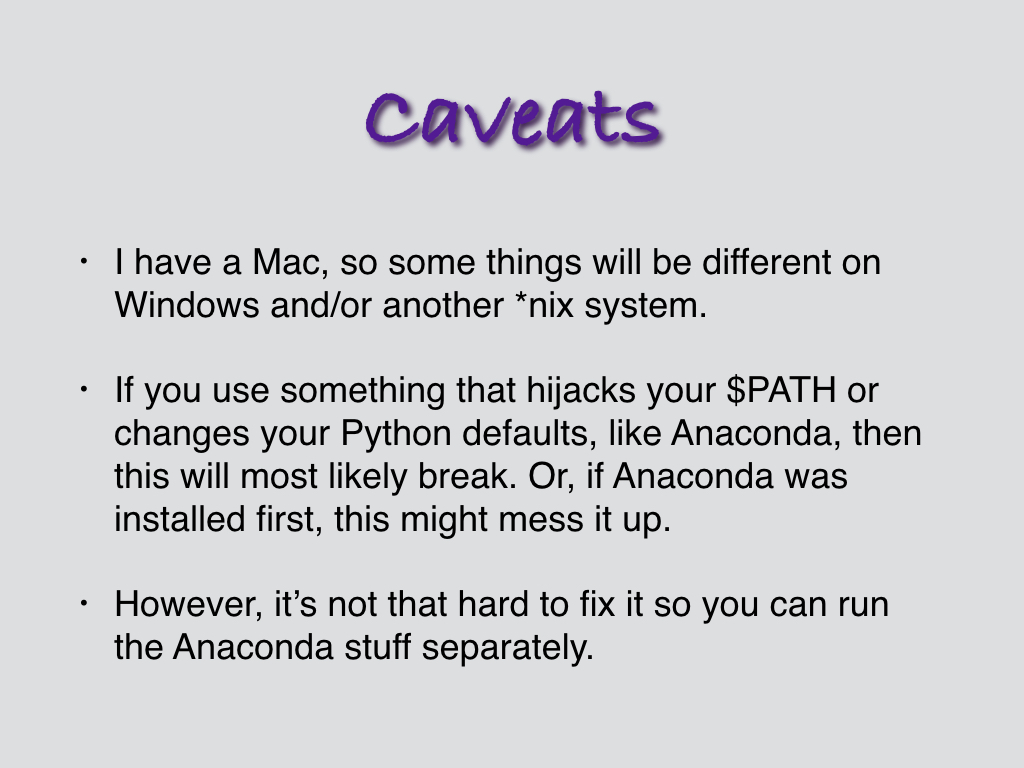
Thanks for reading!
I hope this has helped you understand virtualenvwrapper! I have found it a very useful tool and for me it has been great. I like to go through lots of tutorials and this is a good way to keep them separated and keep track of them all.